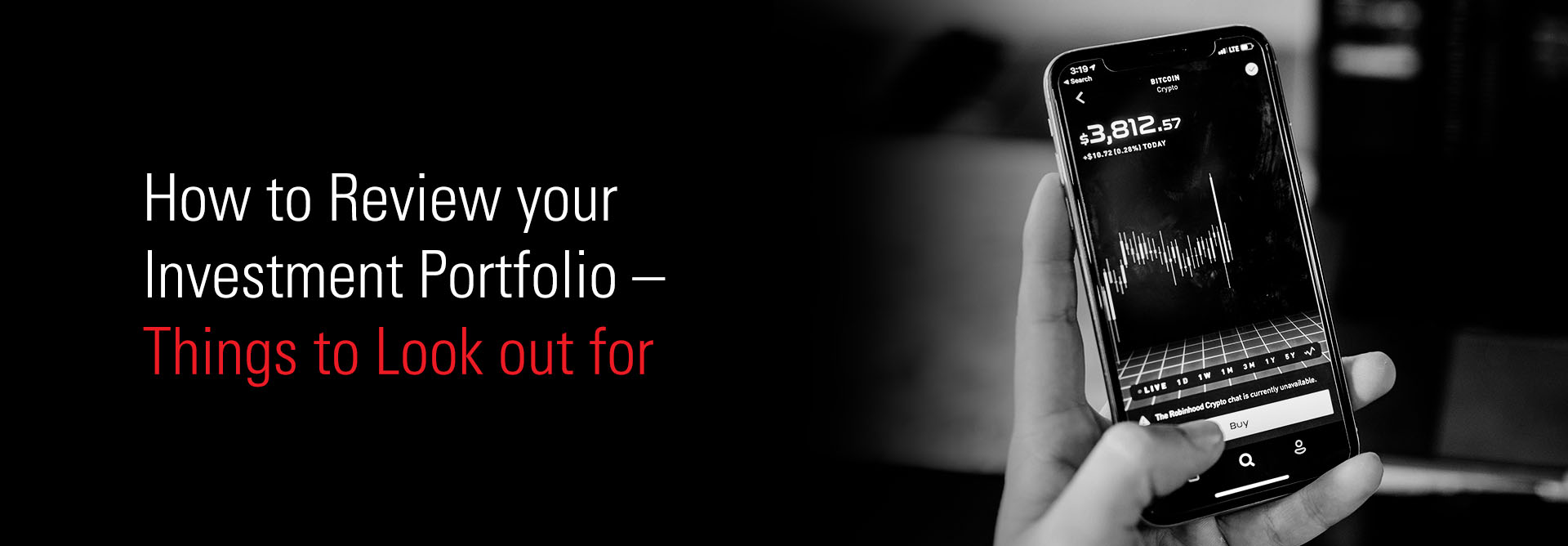25 Jan 2023
Reviewing your investment portfolio — the why, the when, and the how
Reviewing your investment portfolio — the why, the when, and the how
If you’re an investor who schedules periodic portfolio reviews, chances are you understand their necessity and are well-versed with their workings. For the uninitiated, the essentiality of portfolio reviews can be explained as follows. Reviewing your investment portfolio is like getting a health check-up — it helps you track progress, identify anomalies, make adjustments, set a realistic target, etc. Just as we do a comparative analysis of two medical reports generated within the span of, say, six months to determine changes and take remedial actions, periodic portfolio reviews can help investors safeguard their financial health. If the health situation can change from time to time, so can your portfolio performance, except only faster.
When to review
As often as not, a portfolio review is followed by rebalancing and changes in investments as per the findings. Frequent changes to portfolios can eat away your returns through the cumulative costs of trading. On the other hand, infrequent reviews and a lack of timely adjustments can lead to wasted opportunities and avoidable losses. This begs the question: How often does a portfolio require a review? Typically, investors are advised to review their portfolios at least twice a year. The once-in-six-months rule is widely considered to be a time frame within which it is not too late to mitigate some losses and capitalize on some opportunities.
That said, there are no set-in-stone rules on when to review. Investors with a propensity for short-term gains and aversion to risks tend to review regularly whereas those who are geared towards long-term gains with predetermined financial goals and targets stay put without a rigid review habit. Today, at a time when financial objectives and risk appetites are dynamic as ever due to externalities such as soaring inflation, a downbeat geopolitical situation, and an overall economic downturn, the need for scheduled periodic reviews isn’t lost on many investors. The awareness is underpinned by evolving priorities, job uncertainties, and increased aberrations from financial conventions. This is to say, an investment portfolio can also be reviewed in response to external stimuli. The many considerations are as follows.
Review considerations
Life-changing situations: People across the socio-economic spectrum are prone to changes in life. As often as not, such changes have a direct correlation to finances. Broadly, they can be classified as expected and unexpected. Retirement, marriage, and children are among the ones that can be classified under expected changes, which give investors the leeway to plan in advance and provision for the imminent expenses. Unexpected changes, which can include job loss, diagnosis of a life-threatening condition and death of an earner in the family, prompt immediate review of the portfolio. At times, these can lead to encashing certain liquid assets.
Change in goals: There is a general consensus that a change in goals is a good thing. The proponents of this notion argue that changing goals represent growth, which has been humanity’s collective intent since the beginning of time. In contemporary terms, a change in goal can be explained as follows: Say your goal was to buy a second home in a tourist destination. You have timed your investment portfolio to meet this goal. Meanwhile, the destination in question has fallen from grace, battered by civil strife, economic fallout, etc., thus denting your plans. You could then resort to plan-b, whose capital requirement may or may not match plan-a. Depending on how far or near you are to accomplishing the plan-b, you could either rebalance the portfolio, cash in, or stay the course.
Risk appetite: While it is true that each individual has a certain risk threshold based on their ingrained financial ideologies, it is equally true that the “risk appetite” is subject to change. With experience and expertise, investors’ ability to stomach greater risks can grow over time. Even the opposite is true, especially if the investor navigates volatile financial markets for prolonged periods. Generally, however, the aversion to risks can peak when an investor is closer than ever to meeting the target. This is perhaps where the need for a review is evidently high.
Portfolio rebalancing: Change happens in a continuum — we can be oblivious to small, day-to-day changes, which can snowball into a macro one over the long haul. You could start with clear-cut goals but go astray in the due course as market circumstances evolve. If you stray far and for too long without a portfolio review, chances are you can never fully reorient yourself. In retrospection, you’ll have deviated from the target allocation. For instance, your target allocation may have been 60% equities, 30% debt, 5% commodities, and 5% cash, but, over time, you may have accrued more debts at the expense of commodities and cash. A portfolio rebalancing, following a review, will help you get back on course.
The externalities: Today, with governing bodies and financial institutions increasingly facing dilemmas, it is safe to expect periodic changes in the tax and regulatory environment. A timely review will keep investors in sync with changes, if any. Besides tax, emphasis also goes towards relative costs of investments. At times the costs of investing/trading can change with new entrants and increased competition. A review helps investors leverage the competitive price points between service providers, leading to maximized returns.
Review mechanisms
Performance evaluation: The performances of equity can have multiple determinants, some of which can betray historic patterns. So, a review should essentially be multi-pronged. While passively managed funds can be evaluated against a benchmark index, others warrant complex mechanisms that factor in multiple variables. Shrewd advisors often use nest-egg or retirement calculators or customized goals- or portfolio-based benchmarks for reviews.
Portfolio allocation: At the outset, investors tend to adopt rules-based allocations. Subsequently, based on performance evaluation, asset allocations can be tailored to individual requirements and external circumstances. For example, young investors tend to be equity-heavy in pursuit of greater returns. Relatively older counterparts are inclined towards fixed-income assets. As investors age, their asset allocations often involve de-risking through greater exposure to bonds. Suballocations involving a shift from high-risk to low-risk bonds, too, are commonplace.
Hedging: A concomitant of portfolio review, especially in the pandemic aftermath, has been hedging. Investors are increasing exposure to inflation-protected securities and bonds, to safeguard from the economic downturn, the extent of which continues to be unascertained. The lingering uncertainties have retained considerable investments in traditional asset classes such as gold and other bullion.
Liquidity: The phrase ‘cash is king’ continues to hold relevance as the liquidity crunch rises amid sluggish economic cycles. The general thumb rule is to provision for cash required for six months of living expenses. Big-money investors can dedicate at least 5% of the entire portfolio to cash. For those in the gig economy, which accompanies occupational uncertainties, the advisable target is cash worth at least one year of living expenses.
An investment portfolio review can include all/some of the aforementioned considerations and mechanisms. But, regardless of the when, why, and how, the core objective is to build a portfolio that characterizes fluidity, low costs, a balance between asset classes, and maximized ROI. This is easier said than done, especially if the investor’s core competency is not Finance. Inadvertently, the solution lies in engaging a financial advisor who can personalize your portfolio based on unique requirements and family circumstances. Drop a mail at info@cfsgroup.com to learn more about portfolio reviews and the best-in-class methods employed by the Continental Group.







